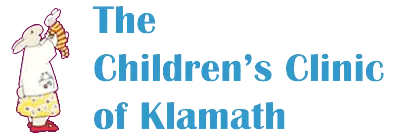A viral infection of the eye. The main symptom is a pink or red eye.
Read MoreArticles

The American Academy of Pediatrics (AAP) is an organization of 67,000 primary care pediatricians, pediatric medical subspecialists, and pediatric surgical specialists dedicated to the health, safety, and well-being of all infants, children, adolescents, and young adults.
As part of that commitment, the AAP publishes expert advice for parents, caregivers, and patients on Pediatric Patient Education. Information can be accessed 24 hours a day, 7 days a week, and many titles also are available in Spanish.
-
Eye Infection - Viral
-
Eye Irritation
Eye irritation from getting an irritating substance in the eye. The main symptom is a pink or red eye.
Read More -
Fainting - Prevention
Fainting is a sudden loss of consciousness and falling down. A return to being awake and alert happens within a minute or so. Also called passing out or blacking out. The medical name for fainting is syncope. This handout can help you prevent the most common types of fainting.
Read More -
Febrile Seizures
In some children, fevers can trigger seizures. Febrile seizures occur in 2% to 5% of all children between the ages of 6 months and 5 years. Seizures, sometimes called “fits” or “spells,” are frightening, but they usually are harmless. Read on for information from the American Academy of Pediatrics
Read More -
Feeding Kids Right Isn't Always Easy: Tips for Preventing Food Hassles
Young children need nutrients from a variety of foods to stay healthy. But what if your child only eats macaroni and cheese or will not eat any vegetables?
Read More -
Fever (Age 0-5)
Your child has a fever if: Rectal, Ear or Forehead temperature: 100.4° F (38.0° C) or higher. Oral or Mouth temperature: 100° F (37.8° C) or higher.
Read More -
Fever (Age 6-21)
Your child has a fever if: Ear or Forehead temperature: 100.4° F (38.0° C) or higher. Oral or Mouth temperature: 100° F (37.8° C) or higher.
Read More -
Fever - Facts Versus Myths
Fever is a body temperature of 100.4 F (38 C) or higher. Fever is a symptom, not a disease.
Read More
- adhd
- adolescents
- autism spectrum disorder
- behavioral and psychosocial issues
- chronic health needs
- common illnesses and conditions
- growth and development
- immunizations
- infectious diseases
- newborns infants and toddlers
- nutrition and healthy living
- pediatric care
- safety and prevention
- school-aged children
- sexual health and sexuality
- sports and fitness
- substance abuse
- well-child visits
- Schmitt Pediatric Care Advice
- COVID-19
- breastfeeding
- Newborn or Infant Problems
- Genital or Urinary Symptoms
- Chest or Breathing Symptoms
- Head or Brain Symptoms
- Ear Symptoms
- Nose Symptoms
- Eye Symptoms
- Behavior Problems
- Skin - Widespread Symptoms
- Neck or Back Symptoms
- Skin - Localized Symptoms
- Mouth / Teeth / Throat Symptoms
- Fever Symptoms
- Abdomen or Digestive Symptoms
- Arm or Leg Symptoms
- Behavior Symptoms
- Sleep Problems
The Children's Clinic of Klamath
2580 Daggett Ave.,
Klamath Falls, OR 97601
